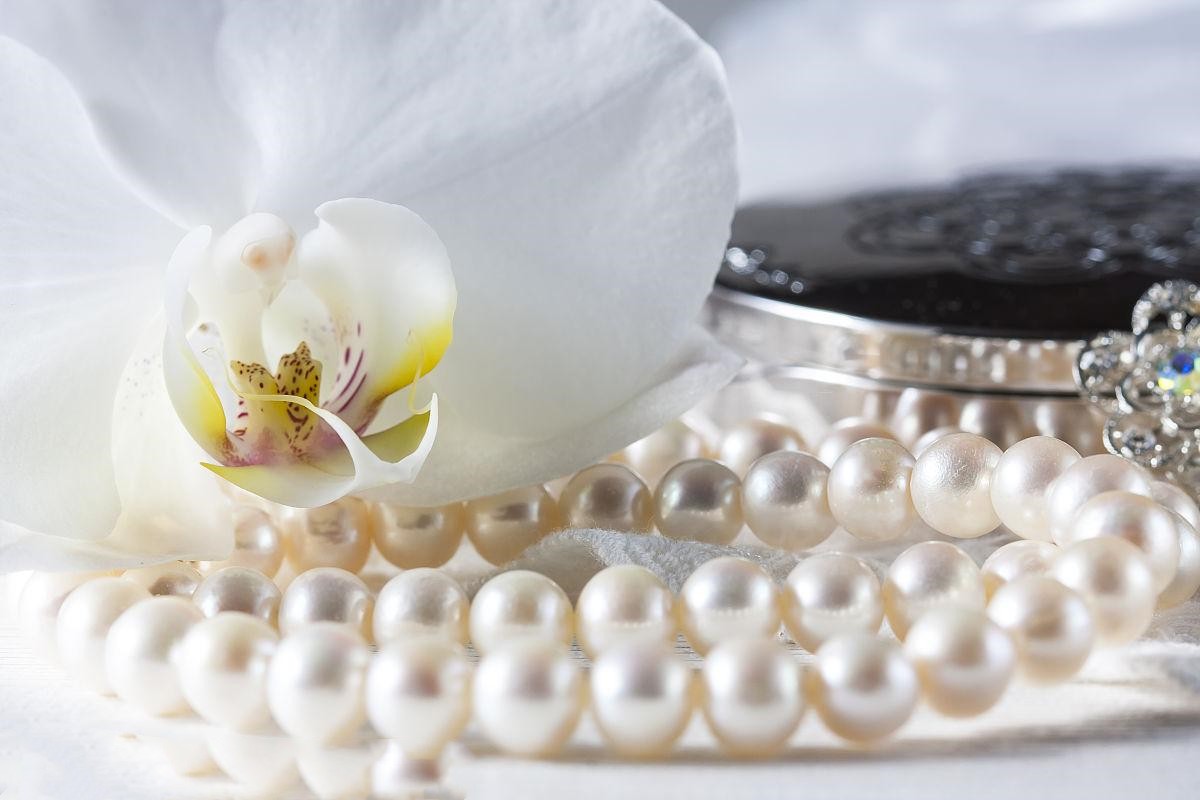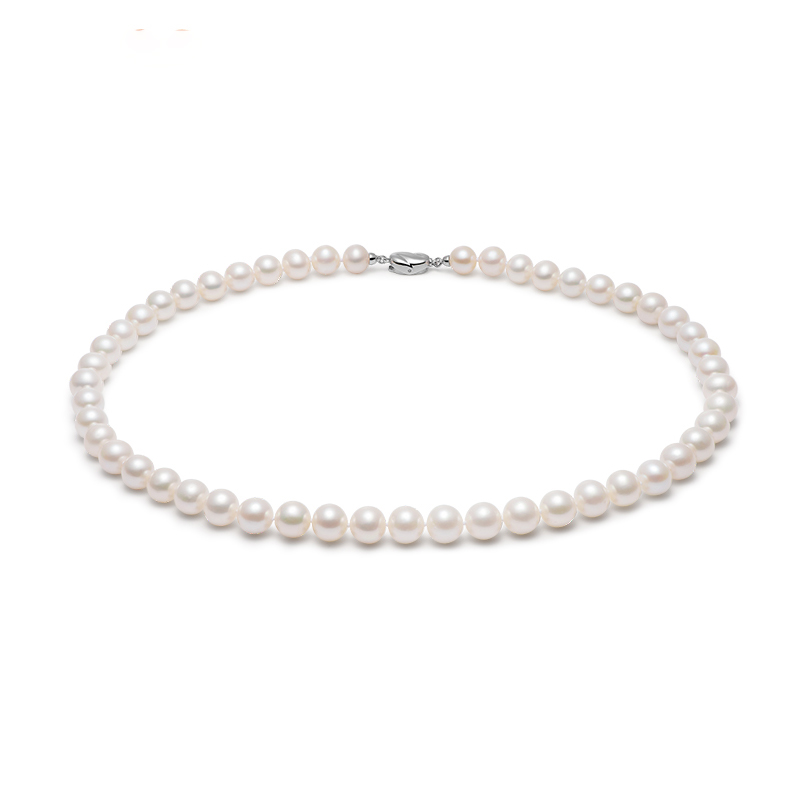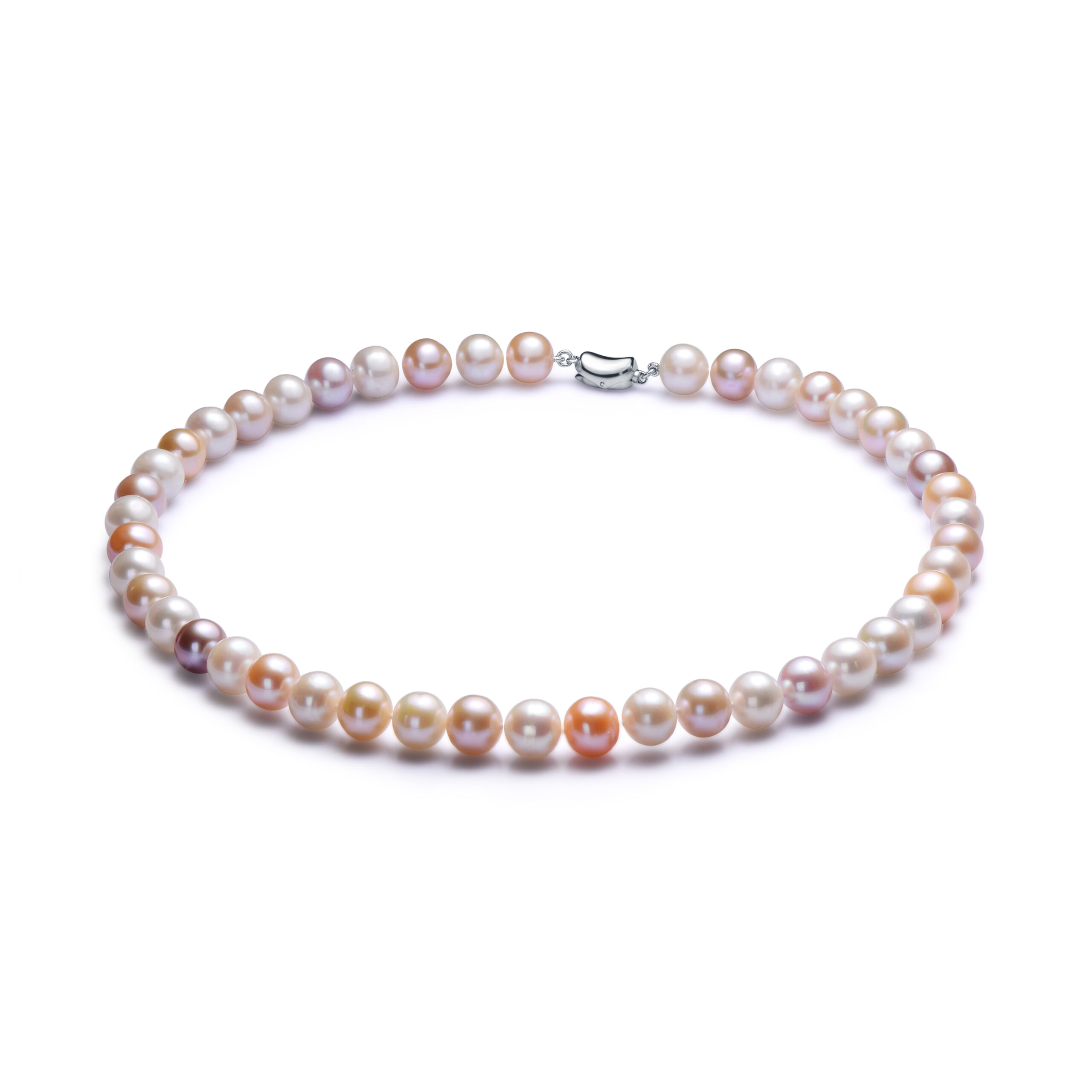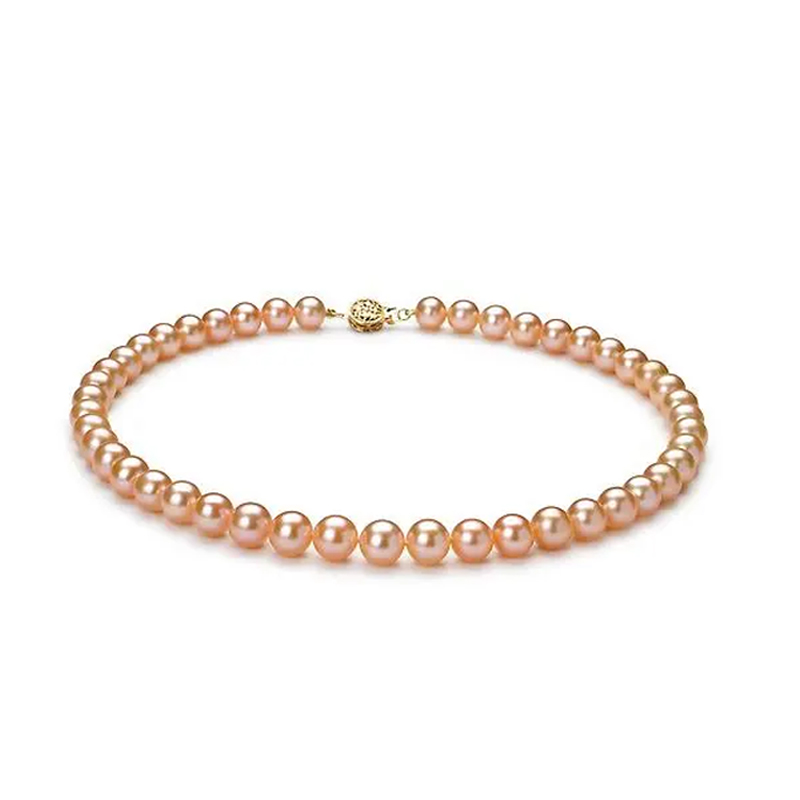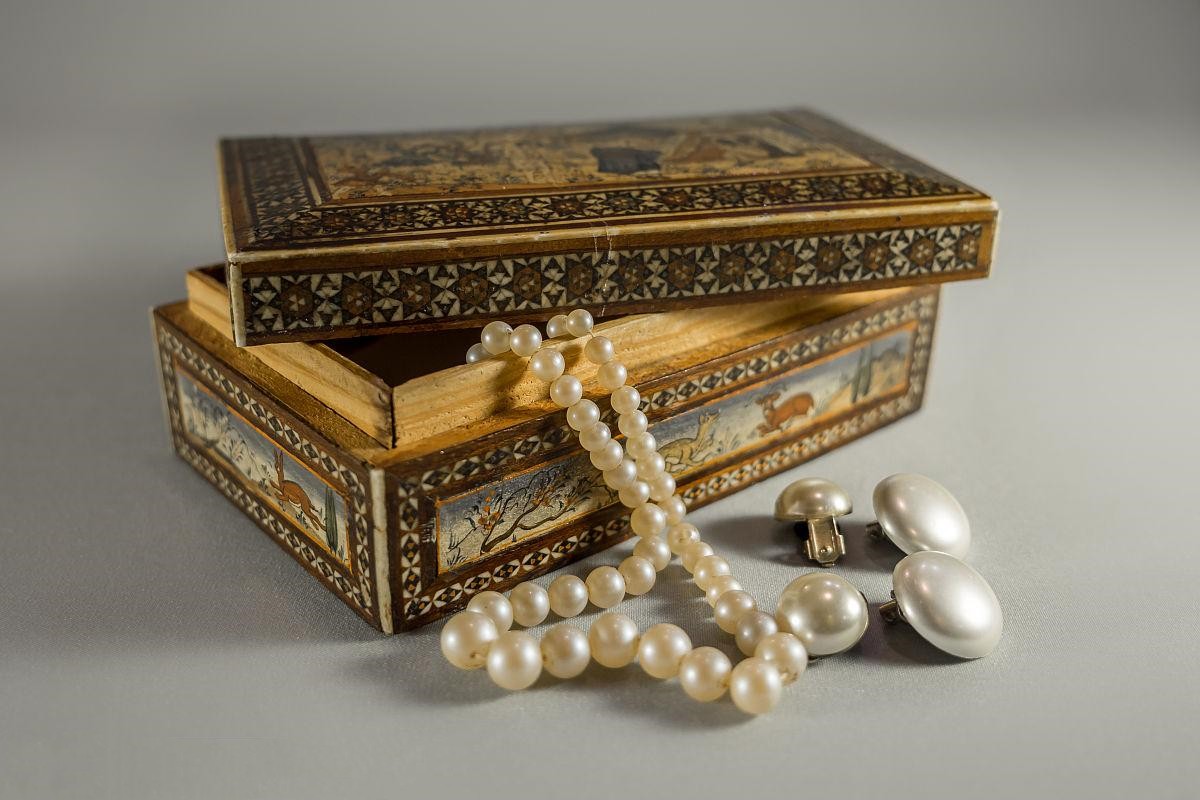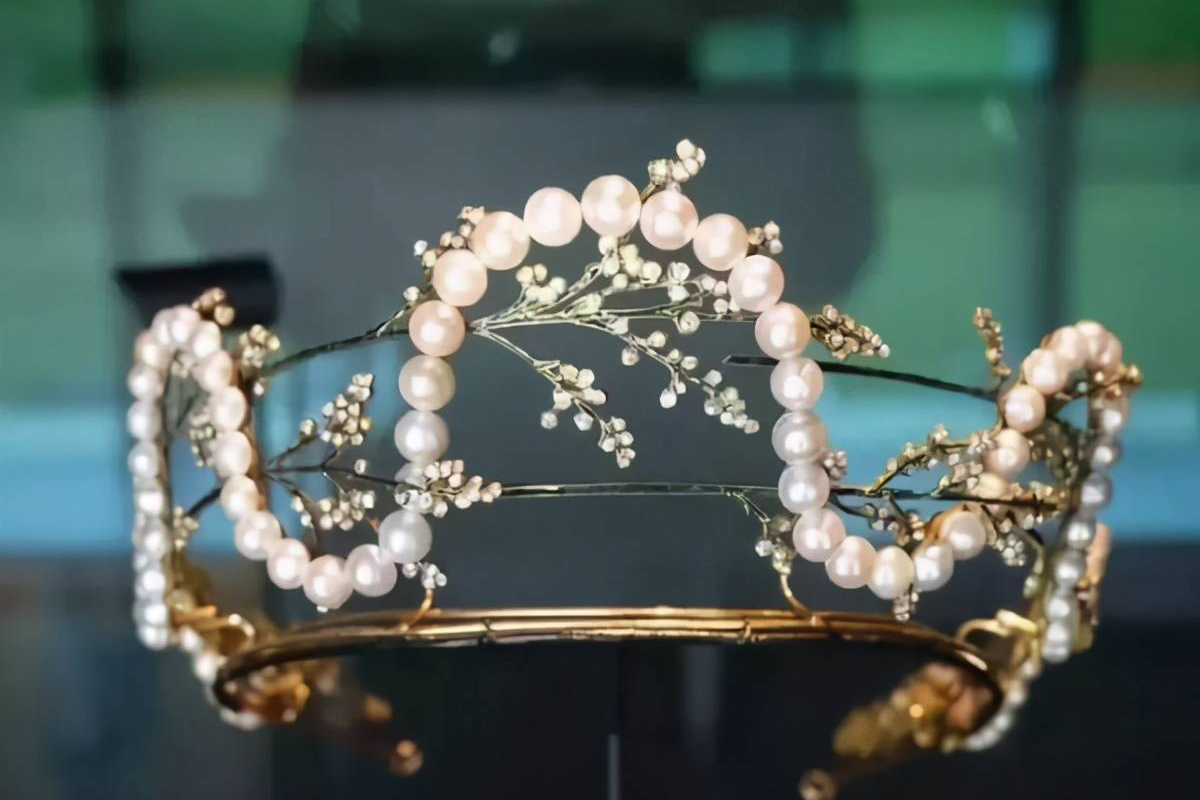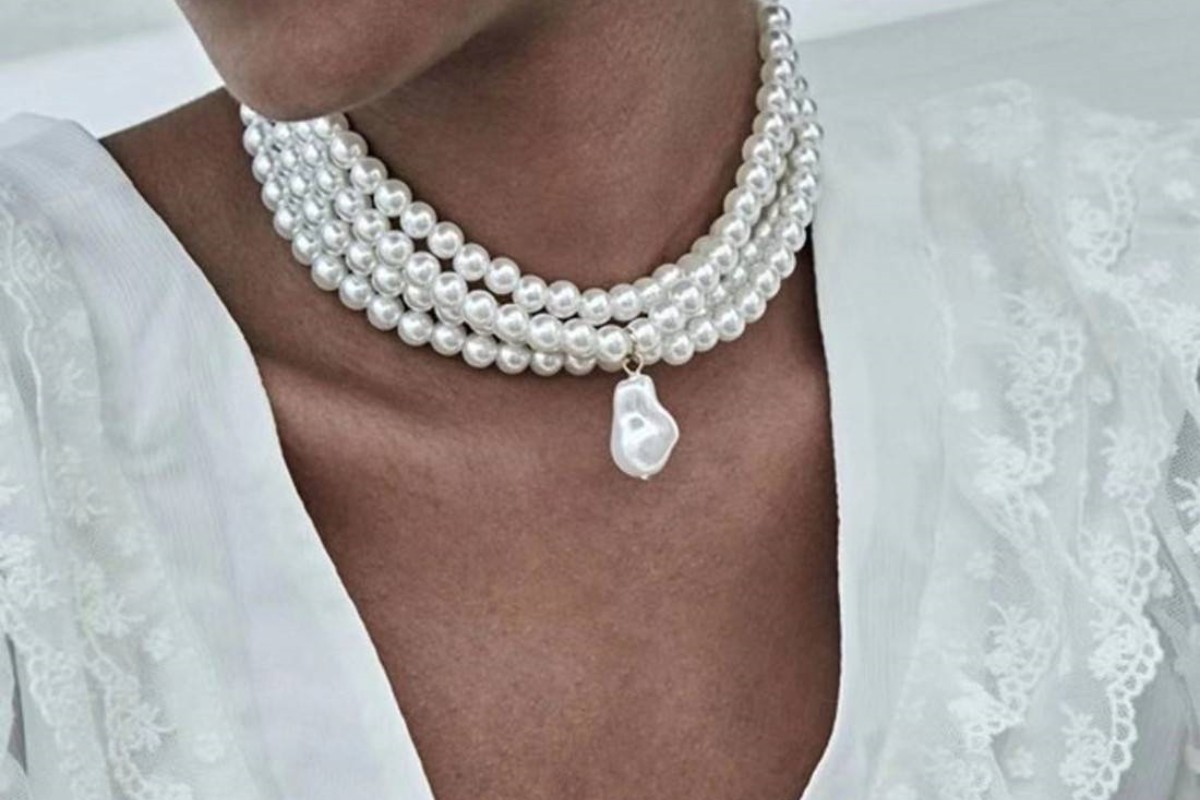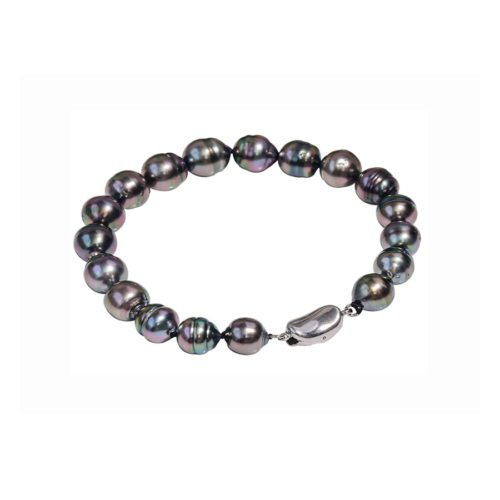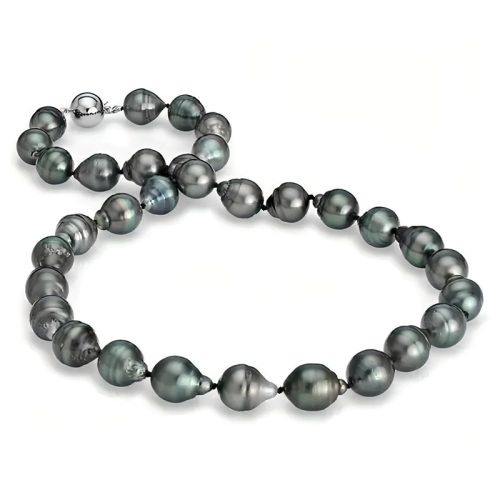There are many types of pearls, but the most common type on the market today is the freshwater pearl. Freshwater pearls have various colors, brilliance, crystal beauty, and colorful shapes and styles, so they are loved by many beauty lovers
Most of the freshwater pearls are seedless cultured, and the mother-of-pearl oysters are mostly triangular sail clams. It usually takes 3-5 years from seedling cultivation to harvesting. Freshwater pearls come in different shapes, including oblate, steamed bun, ellipse, near-round, special-shaped, etc. There are relatively few perfect round pearls, usually around 5-10MM in size, and the main colors are white, pink, and purple.
Freshwater pearls look very similar to Akoya seawater pearls in appearance, but their price is cheaper than Akoya seawater pearls. The main reason is that the output of freshwater pearls is very high. Generally, one mother-of-pearl can produce more than ten to twenty pearls, while one mother-of-pearl of seawater pearls can only produce one pearl, so the price of freshwater pearls is relatively high.
Freshwater pearls are a popular and valuable gemstone that are found in many different colors and sizes. Unlike saltwater pearls, which are formed in oysters, freshwater pearls are formed in mussels that live in rivers, lakes, and other freshwater bodies. The process of forming a freshwater pearl can take several years, although the exact time frame can vary depending on a number of factors.
One of the main factors that influences how long it takes for freshwater pearls to form is the age of the mussel. Generally, older mussels are capable of producing larger and more valuable pearls, but they also take longer to form. Some mussels may produce pearls in just a few months, while others may take several years to form a single pearl.
Another factor that affects the formation of freshwater pearls is the quality of the water in which the mussels live. Mussels that are exposed to pollutants or other environmental stressors may not be able to produce high-quality pearls or may take longer to do so. Additionally, factors such as water temperature, pH levels, and nutrient availability can all impact the formation of freshwater pearls.
Despite these variables, freshwater pearls generally take at least one to two years to form, with some taking up to six years or more. During this time, a small irritant such as a piece of sand or debris becomes lodged inside the mussel’s shell, which triggers a defensive response.
The mussel then begins to secrete layers of nacre around the irritant, which gradually builds up over time and forms the pearl.
In conclusion, freshwater pearls are a beautiful and valuable gemstone that can take anywhere from one to six years or more to form. The process is influenced by a number of factors including the age of the mussel, water quality, and environmental conditions.
Despite this variability, freshwater pearls remain a popular and sought-after gemstone due to their unique beauty and rarity.
9.0-10.0mm AAA 16/18 inch Quality Round Freshwater Pearl Necklace Choker
$559.00 – $628.00
9% Off
8.5-9.0mm AAA 16/18 inch Quality Round Freshwater Pearl Necklace Choker
$229.00 – $239.00
18% Off
8.0-8.5mm AAA 16/18 inch Quality Round Freshwater Pearl Necklace Choker
$179.00 – $189.00
25% Off
7.5-8.0mm AAA Quality 16/18 inch Round Freshwater Pearl Necklace Choker
$159.00 – $169.00
23% Off

